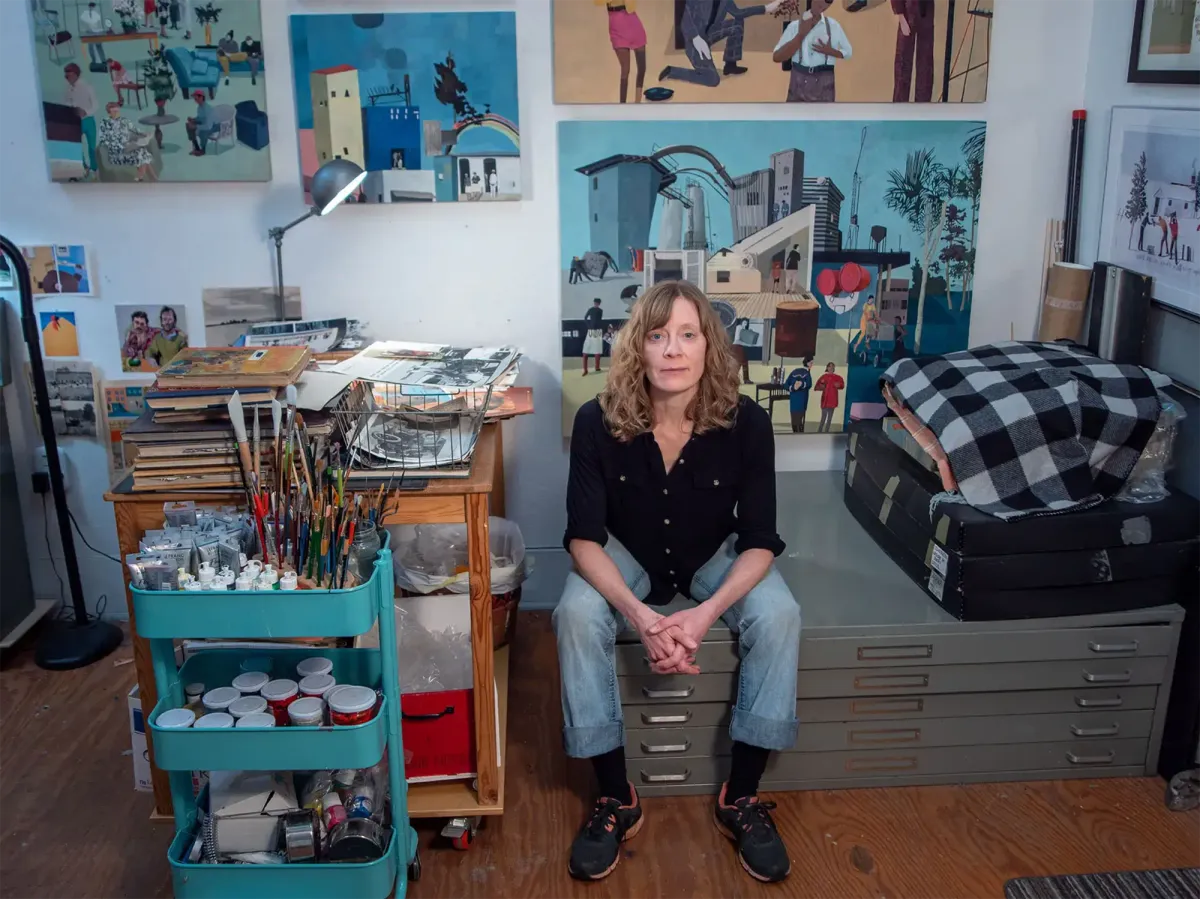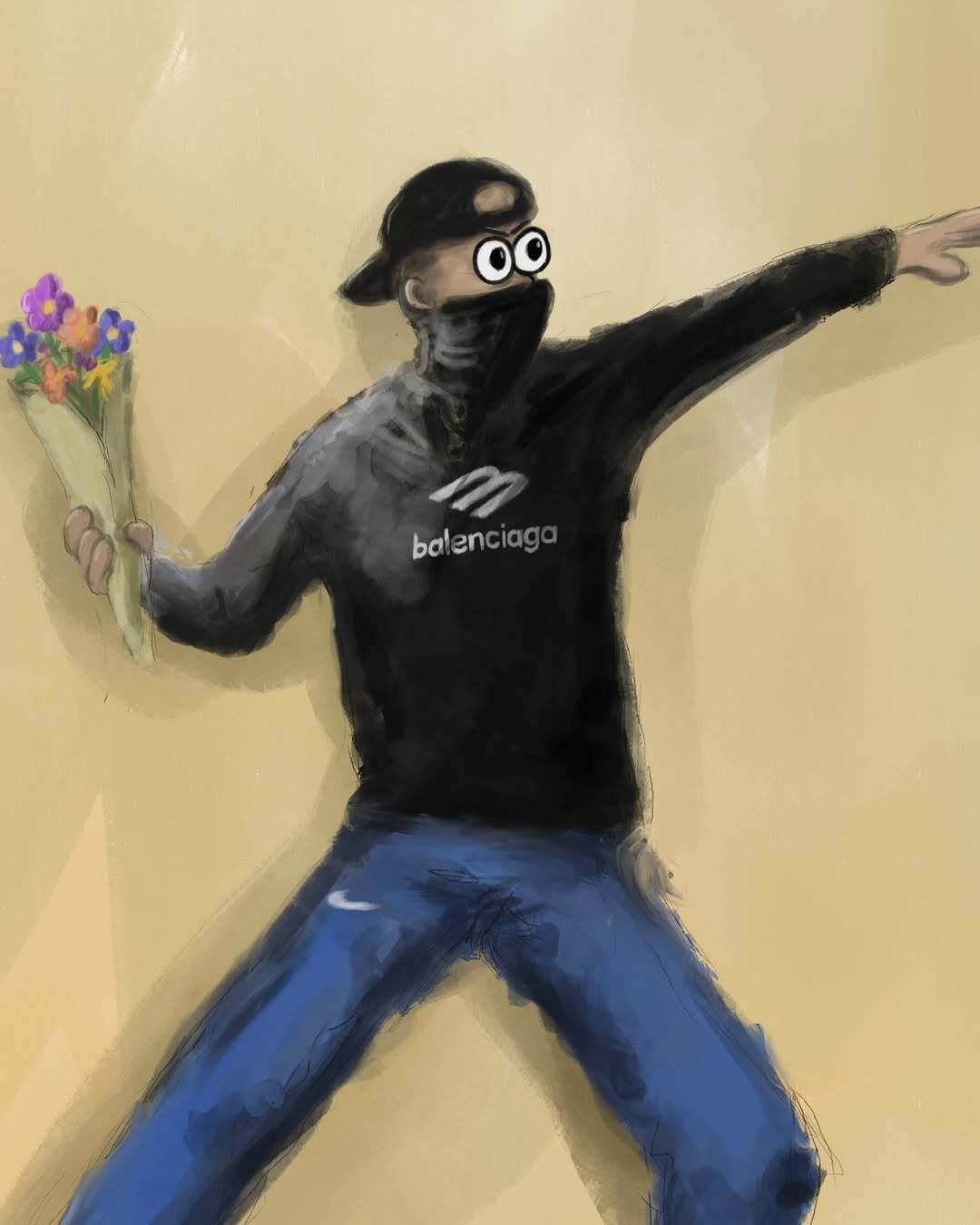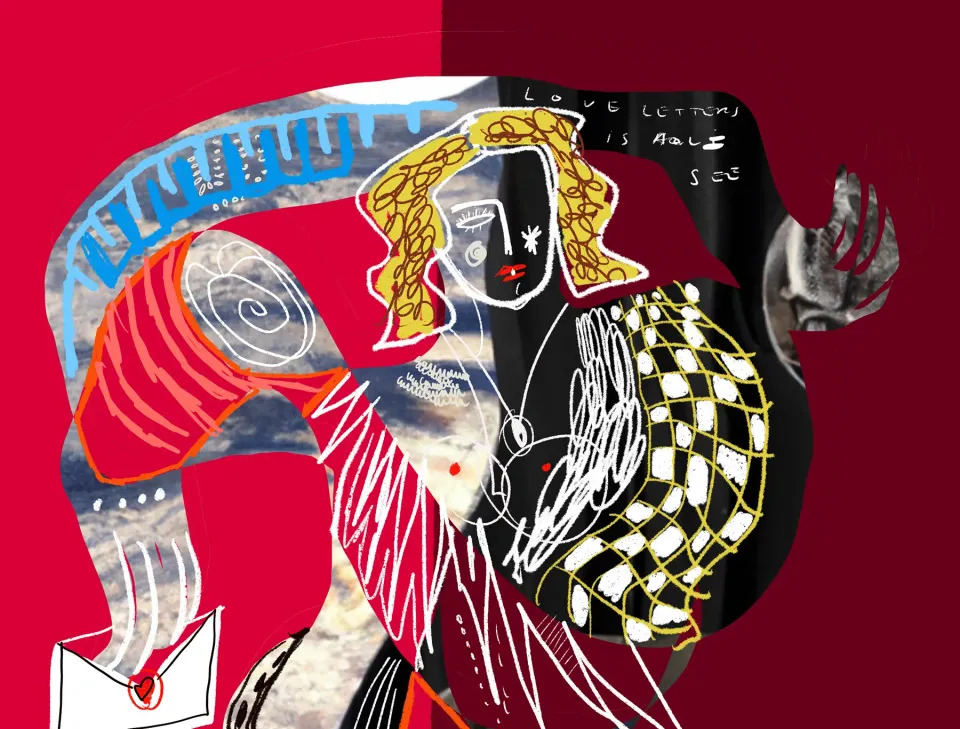A Kaleidoscope Of Collages: Exploring The Unique World Of Hannah Morris
We are excited to present our interview with Morris, where she shares insights into her creative process, inspirations, and experiences as an artist. Read on to discover the fascinating world of this rising artistic talent

EXPLORING THE DECONSTRUCTED IMAGERY OF A RISING ARTISTIC TALENT
The Munchies Art Club is thrilled to share the work of the talented artist we discovered through the Steve Turner LA gallery.
Hannah Morris captivating visual narratives and eclectic practice have caught our attention and we knew we had to learn more.
We are excited to present our interview with Morris, where she shares insights into her creative process, inspirations, and experiences as an artist.
Read on to discover the fascinating world of this rising artistic talent.

WHO IS HANNAH MORRIS? PLEASE INTRODUCE YOURSELF AND YOUR WORK IN YOUR OWN WORDS.
I’m a painter, a collage artist, and a visual storyteller.
In my current practice, I combine collage and painting a process of deconstructing found imagery and then reconstructing new images and visual stories.
My figures, buildings, animals, and urban and wild landscapes are inherently off-kilter, awkward, and restless — what I see as a reflection of a struggle to define ourselves and our environment and to to seek or avoid connection therein.

YOUR WORK CAUGHT MY EYE ON THE INSTAGRAM FEED OF STEVE TURNER LA. HOW DID THIS OPPORTUNITY COME ABOUT AND WHAT DOES IT MEAN TO YOU TO HAVE YOUR WORK SHOWCASED IN SUCH A PRESTIGIOUS GALLERY?
My work was featured in New American Paintings - in their print publication and on their Instagram feed.
Steve Turner Gallery saw my paintings on that feed and reached out to me to learn more about me and my work.

I was offered a solo show in their gallery; the show opened two weeks ago and is on view through April 22.
It has been a wonderful opportunity to show there - it’s my first time showing on the West Coast and it has been great to make connections and be introduced to a new audience.

YOUR ART IS TRULY ONE OF A KIND. COULD YOU TELL US MORE ABOUT YOUR JOURNEY TO BECOMING AN ARTIST? WERE THERE ANY DEFINING MOMENTS OR EXPERIENCES THAT MADE YOU REALIZE THAT ART WAS YOUR PASSION?
I grew up in a household full of art and music.
My mother is a self-taught artist and I sat alongside her in her studio painting and drawing.
So I have been drawing and making things for much of my life.
My formal education was in cultural and documentary studies.
I then an urge and pull to study art formally so I attended graduate school in South Africa in a visual arts program that specialized in illustration.

It was at that point that I started making art in earnest, influenced by the storytelling and design aspects of my illustration training as well as by the phenomenal array of South African artists around me.
It was during my graduate school education and the period right afterwards that I experienced a profound sense of belonging in the work I was making; I wanted to just keep making work, and I had found my place in the world.

While doing an artist residency in Brazil (Instituto Sacatar) I started combining collage with painting and drawing.
I had a pile of a vintage Brazilian magazines that I had found at a market in Salvador, and I started creating collages as well as trying my hand at very simple stop-frame animation.
A fellow artist at the residency showed me a few things about stop-frame animation — so that’s what I did for the last few weeks of the residency.
Now, I think of my current work as paused scenes from an animation.

I LOVE HOW YOUR PAINTINGS INCORPORATE FOUND IMAGES FROM POPULAR AMERICAN MAGAZINES FROM THE 1940S THROUGH THE 1970S. WHAT DRAWS YOU TO THESE PARTICULAR TIME PERIODS AND SOURCES FOR YOUR WORK? I'M CURIOUS, HAVE YOU EVER COME ACROSS A UNIQUE AND UNEXPECTED ITEM THAT YOU JUST HAD TO INCORPORATE INTO ONE OF YOUR PIECES? WHAT WAS IT, AND HOW DID IT ENHANCE THE FINAL ARTWORK?
I am drawn to print material and ephemera from the 1930s through the 1970s for a number of reasons - I love the limited color palette, firstly, and the matte finish of the printing process.
I also love and/or am intrigued by the fashion as well as the events, news, and political foment and activism that all took place during that time period. I also am drawn to the interrogation of a cultural history that is shown — and not shown — in these mainstream publications.

There are very few people of color featured in articles and in the ads, and even fewer women of color. And for the white women featured, there are very specific gender and economic roles prescribed.
I am compelled to deconstruct these images and then reconstruct them in a completely different context.
I often come across unexpected images that I end up incorporating into my work.
For example, I’ve used parts of Richard Nixon’s face in a reconstructed figure that became the underpainting for one of my pieces.
I often end up using bits and pieces of famous politicians or cultural heros to create entirely new characters in completely different contexts.

YOUR ARTWORK IS INCREDIBLY CAPTIVATING, AND I WOULD LOVE TO LEARN MORE ABOUT YOUR CREATIVE PROCESS. CAN YOU TAKE US THROUGH THE STEPS YOU TAKE WHEN STARTING A NEW PIECE, FROM THE INITIAL IDEA TO THE FINISHED PRODUCT? WHAT INSPIRES YOU ALONG THE WAY, AND WHAT DOES YOUR WORK PROCESS LOOK LIKE FOR EXAMPLE ON THE ARTWORK BELOW:

My work is highly intuitive and very process-driven. I have an array of vintage materials that I sift through until I see a gesture or expression or color that captures my attention.
If it sparks something in me - the possibility of a story or the first glimpse of a new scene that I could create, then I follow that.
I start gathering pieces to build this new story.
I look for tone, gestures, and patterns, and from all of that, I create my composition.

Hannah Morris | Steven Turner Gallery Los Angeles
This collage serves as my underpainting and over that, I start to edit, accentuate, repeat or recreate with paint.
I use matte paint - Flashe acrylic paint or gouache paint - to entirely block out sections or to layer over more transparently so that some of the original tone or pattern shows through. Sometimes I’ll add collage bits and pieces on top of the painted layers but more often than not, I see my process as subtractive.
I first make this quilted patchwork of a composition and then I start blocking out (or erasing) to expose the contours of a new composition. I’m always looking to find the find the balance between opaque and translucent - the contrast between solid and see-through.

CAN YOU DESCRIBE TO US WHAT A TYPICAL DAY LOOKS LIKE FOR YOU WHEN YOU'RE CREATING? DO YOU HAVE ANY SPECIFIC RITUALS OR ROUTINES? WHAT TYPE OF MUSIC DO YOU LISTEN TO, AND WHERE IS YOUR STUDIO LOCATED?
A typical day for me is that I’ll be either hunched over my piles of magazines and materials, cutting or tearing out bits and pieces and starting to assemble a collage on my prepared panel. Or else I’ll be at the painting phase where I’m starting to build my paint layers on top of the collage underpainting.

All the while, I’ll be listening to an audiobook or a podcast.
I don’t usually listen to music while I work - I prefer spoken word and stories which perhaps is not a huge surprise since I’m more or less a story junkie.
My studio is located on the third floor of an historic building in downtown Barre, a small, working class city in central Vermont.
The building is now an art center that houses a multi-floor gallery, art classrooms, and professional artist studios. I have hardwood floors and huge windows as well as tall ceilings and lots of great wall space so I’m quite content.

IT'S FASCINATING TO LEARN THAT YOU PURSUED GRADUATE STUDIES IN VISUAL ARTS AT STELLENBOSCH UNIVERSITY IN SOUTH AFRICA AND LIVED IN CAPE TOWN. IT MUST HAVE BEEN A TRULY REMARKABLE EXPERIENCE TO IMMERSE YOURSELF IN THE CULTURE AND BEAUTY OF SUCH A BREATHTAKING PART OF THE EARTH. COULD YOU TELL US MORE ABOUT HOW THIS OPPORTUNITY CAME ABOUT AND WHAT IT WAS LIKE LIVING THERE? WHAT DID YOU TAKE BACK FROM THAT EXPERIENCE THAT HAS INFLUENCED YOUR WORK? AND HAVE YOU HAD THE CHANCE TO GO BACK SINCE THEN?
I landed in the Western Cape of South Africa through a Rotary International scholarship to pursue postgraduate studies for a year.
I started off studying botanical illustration then quickly switched to narrative illustration and then from there, expannded into visual art.
After I got my degree, I ended up staying in Cape Town for another four years, living and working as an artist.
It was the most beautiful city I have ever lived in, first of all.

Then to be living a place surrounded by so many different cultures and people was life-changing.
I learned and grew so much in those years.
I had a wonderful group of artist friends and a thriving arts community set within art scene that was dynamic, evolving, and fascinating.
I think my work is heavily influenced by my time in South Africa - I feel like my world cracked open and got very large and complicated.
I had so many experiences and met so many different people - all of which is illustrated in my work in various ways.
I haven’t had a chance to return yet but I would love to; I can’t imagine going back for just a short visit, though - I’d have to spend a solid amount of time there to revisit places and reconnect with people.

THANK YOU FOR TAKING THE TIME TO ANSWER MY QUESTIONS. ARE THERE ANY PRESENT OR UPCOMING PROJECTS THAT YOU WOULD LIKE TO SHARE WITH US?
The next project coming up is an exhibition at the Brattleboro Museum & Art Center that opens in May.
A huge thank you to the wonderful Hannah for sharing her work and story with us to share with you.




